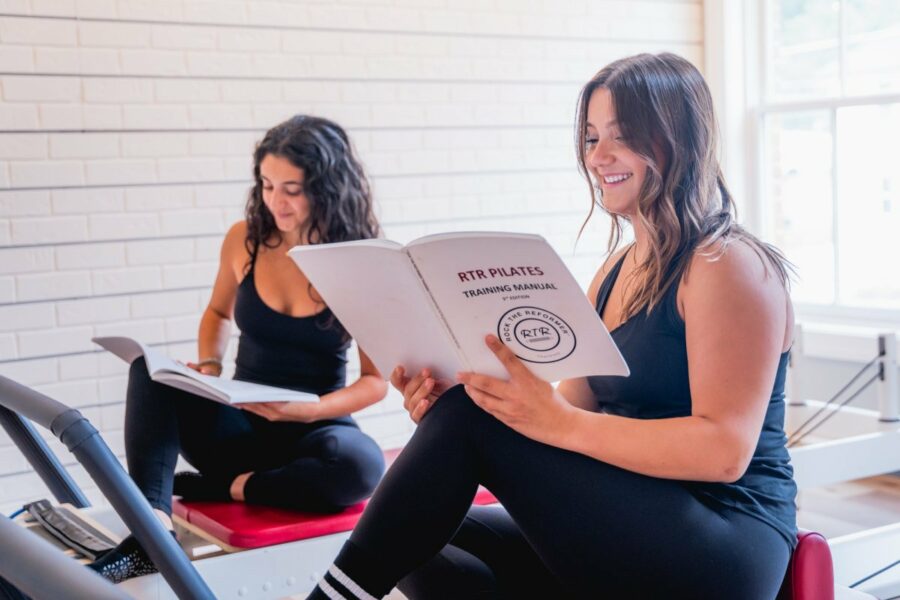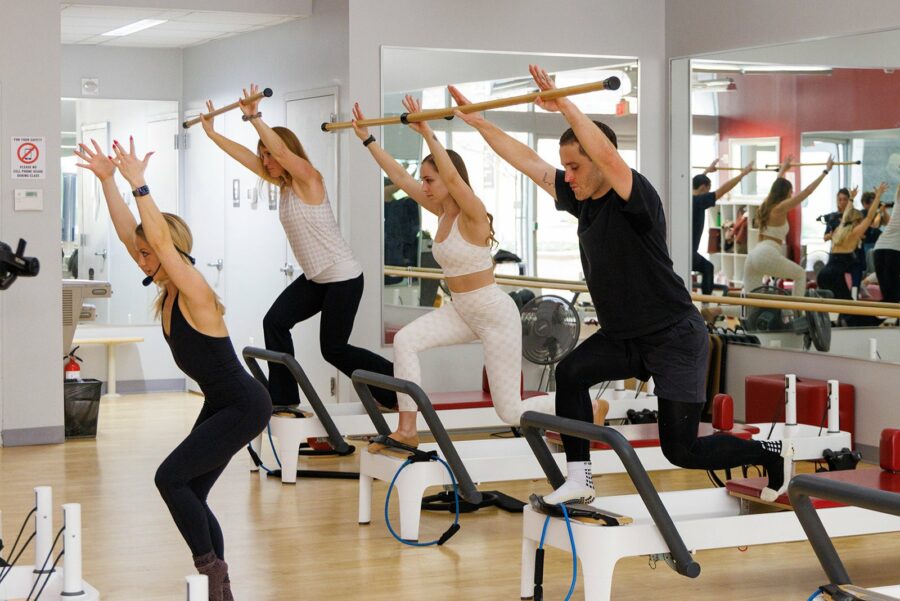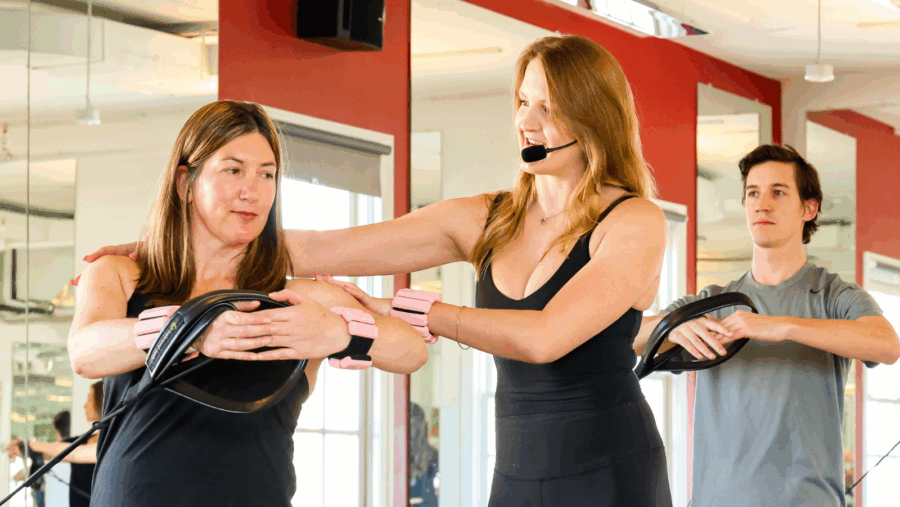Pilates is a great way to cross-train for almost any sport. As an efficient, whole-body workout focused on strength, flexibility, and balance, it’s the perfect compliment to a well-rounded exercise routine. For many of us this winter, that means hitting the slopes!
Whether you’re focused on injury prevention or beating your PR on that black diamond, regular Pilates can help you reach your goals this ski season.
Your body on the slopes
Skiing is a full-body workout that tests your mobility, flexibility, core strength, balance, and control (not to mention – it’s a fantastic leg workout). It can also put your body to the test, and push you to your limits. It’s physically demanding, and particularly injury-prone as a sport.
Winter sports like skiing and snowboarding work most of the major muscle groups, with particular pressure on the back, abs, glutes, and hamstrings, as well as the knee and ankle joints.
Common injuries during ski season include knee and ankle sprains, shoulder dislocations, fractured wrists, and spinal injuries. Obviously, wearing proper equipment (especially a helmet) are critical components of injury prevention. But many of these injuries are caused by overextension, and improper form.
Prepare your body before you hit the slopes to improve performance and avoid injuries and falls. Regular Pilates practice in the weeks before a ski vacation can improve your form, muscle control, and overall performance, while decreasing the risk of injury.*
*You should 100% still wear a helmet at all times. Please.
“Pilates is a great exercise for skiers! Through spine strengthening exercises as well as ab/oblique exercises, your body can more easily transfer force from the lower limbs to create better movement and rotation in the torso, without putting too much pressure on one joint.” – RTR Instructor Gina D.
Mobility and flexibility
A wide range of motion for the spine, hip, and ankle are essential for skiing and snowboarding. This need for mobility and flexibility is critical for your form on the slopes, and it’s not a static ability.
Our reformer Pilates classes focus on moving from the core and using abdominals to stabilize the spine. This focus on spinal rotation helps our students maneuver on skis, while balance disk exercises imitate the transfer of weight you’ll need to race down the slopes.
A stable, mobile spine will help skiers avoid the stress and fatigue that comes from a long day on the mountain, while spinal rotation emphasizes the correct form to pivot during turns.
Plus, a mobile and flexible body has another advantage: it can protect you from injury if (and let’s be honest, when) you do fall. A good range of motion will help you recover if you fall, or if you twist suddenly to avoid another skier.
Building strength = more time on the mountain
Pilates is a great way for skiers to strengthen their abdominals, obliques, glutes, and hamstrings, all essential components of your form.
A strong and stable core is absolutely vital for a skier’s endurance because when you ski, your core needs to stay relatively still, with the majority of movement concentrated in the legs. Unnecessary upper body movement can hinder form, which consumes unnecessary energy and makes you more injury-prone.
For all that lower-body movement, Pilates exercises like bridging will build strength in the glutes and hamstrings. Because the classic ski squat stance puts so much pressure on the quads, our lower muscle groups can become unbalanced and more injury-prone, especially in our hamstrings. Pilates exercises will strengthen the hamstrings to balance the body, protecting your knees and the surrounding muscle groups.
Overall, skiing can put disproportionate pressure on one side of the body on your dominant side, putting your body off-balance and under-developing critical muscle groups. Pilates’ single leg work exercises help even out your muscle development, so both sides of your body are equally strong and capable.
Legwork & Footwork
In our Pilates classes, we often focus on exercises in parallel, external, and internal rotations, all of which help build strength in the muscles supporting the ankles, knees, and hips. These exercises improve mobility, so you can move your body with confidence.
Footwork is another critical Pilates component for skiers of all skill levels. Footwork will strengthen your feet and ankles, and ensure that you use your entire foot while skiing, not just one part. The foot is the foundation of all movement, so the stronger and more balanced you are in the foot, the more that balance and control will extend through all other movements.
Good Pilates exercises for skiers will help with alignment, strengthening the core, and improving flexibility. Some great moves include footwork, bridging, short box abs, side box abs, long stretch, feet in straps- focusing on the hamstrings, adductor stretches, and piriformis stretching. – RTR Instructor Gina D.
Perfecting your form
Proper alignment and form are so important for skiing. Knees should be aligned correctly with ankles and feet for stability and injury prevention, while all those side-to-side hip movements need some seriously strong lateral muscles and control.
Again, Pilates is a perfect way to increase your ability and awareness to control your body movements. Pilates improves alignment from head to toe and fosters an awareness of the body that will improve your performance as a skier.
See the results for yourself
Sign up for RTR Pilates and experience the results for yourself – on and off the slopes! Get your first month of unlimited classes for just $129.



